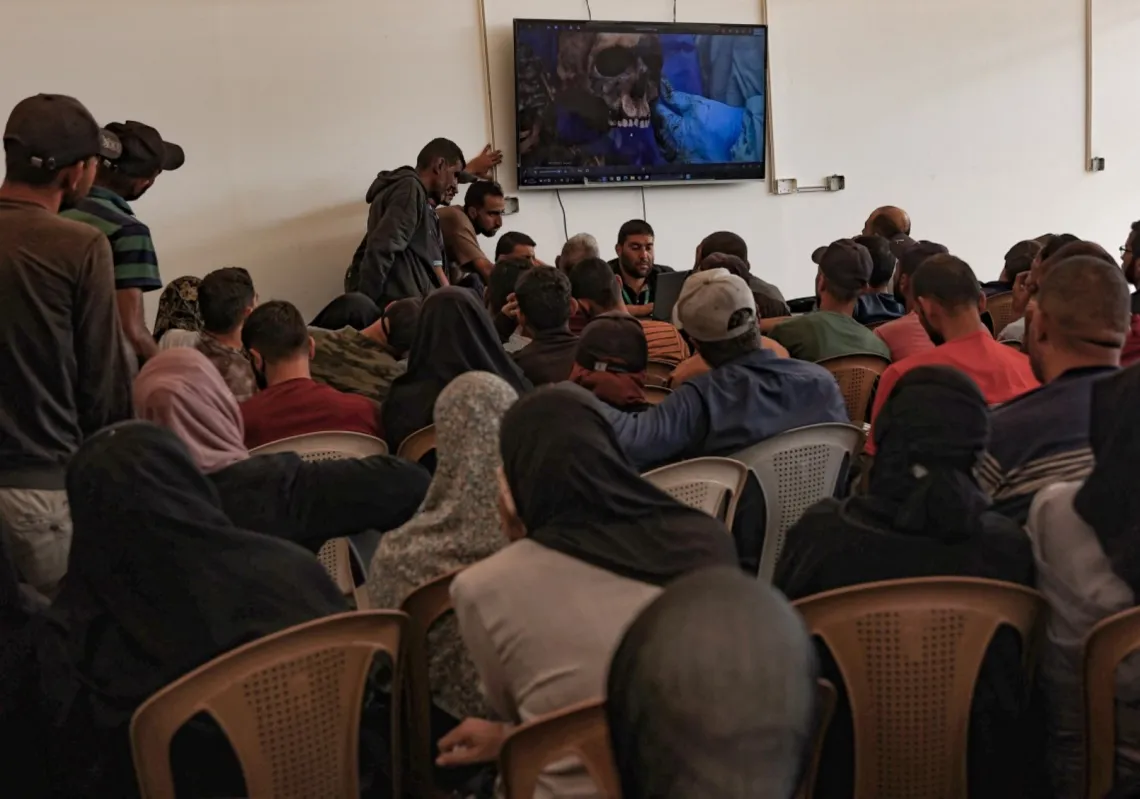 In this photograph taken on April 11, 2017, an Afghan security force personnel patrols inside a mosque during an ongoing an operation against ISIS militants in the Achin district of Nangarhar province.(Getty)[/caption]
In this photograph taken on April 11, 2017, an Afghan security force personnel patrols inside a mosque during an ongoing an operation against ISIS militants in the Achin district of Nangarhar province.(Getty)[/caption]
by Michael P. Dempsey
Over the course of 2017, ISIS suffered defeat after devastating defeat at the hands of the United States and its allies, culminating in the seizure last October of the group’s declared capital of Raqqa, Syria. As of today, the group controls no major population center in either Iraq or Syria. Yet this does not mean that ISIS no longer poses a significant danger. With the end of the physical caliphate, ISIS’ tactics are evolving. It is more and more likely to avoid major battlefield engagements and instead resort to terrorist attacks in the Middle East, other conflict zones, and the West. U.S. policy needs to change quickly to meet the evolving threat, both in terms of its operations in the region and of its counterterrorism priorities at home.
In order to remain militarily relevant, ISIS increasingly prefers to conduct isolated suicide attacks and hit-and-run operations. In early January, the group’s official media wing published a list celebrating nearly 800 such attacks in 2017, including ones against the Iraqi military (nearly 500), Kurdish forces in Syria (136), and the Assad regime and its allies (120), as well as a few dozen against moderate opposition groups in Syria. Although many of these attacks occurred during operations to liberate Mosul and Raqqa, it’s clear that ISIS leaders view this type of strike as the group’s best battlefield option for the foreseeable future. Indeed, the early January ISIS drone attack on Russian military facilities in Syria is another concrete example of the group’s desire to inflict as much pain as possible on its enemies while avoiding large-scale direct military engagement. Even ISIS itself recognizes that the days of seizing and holding cities are behind it.
Overseas, ISIS’ eight global branches are embracing similar tactics. In Afghanistan—particularly in Kabul—ISIS fighters have recently launched several devastating suicide attacks. In Egypt last month, a small group of two dozen militants waving ISIS flags conducted a hit-and-run-style attack against a Sufi mosque on the Sinai Peninsula. It’s believed to be the single deadliest such attack in modern Egyptian history, claiming the lives of more than 300 people. In these types of assaults, the group’s overarching objectives have been constant—to highlight ISIS’ continuing operational prowess and to target other religious groups while positioning itself as the true defender of the faith.
With these changes in tactics has also come a notable shift in ISIS’ public messaging strategy. For most of the past three years, the group has shaped its public narrative around the historical significance of the physical caliphate and the religious obligation of Muslims to support it. Since the fall of Raqqa and Mosul late last year, however, its propaganda campaign has struggled mightily to generate content and its message has adopted a decidedly darker tone. As Charlie Winter wrote last month in Wired UK, almost three-quarters of the group’s nearly 40 media outlets have been silenced in recent months, and “92 percent of the group’s propaganda revolves around war, and war alone.” In other words, the ISIS’s loss of its territorial safe haven has crippled its media arm, and the group is now less focused on recruiting followers for a new life in Iraq and Syria than it is on lashing out at perceived enemies. Although this shrinking online presence is a positive development, the current focus on the encouragement of indiscriminate violence globally is worrisome.
There are several creative policies that the United States and its allies could pursue to meet the evolving threat. First, Washington might redouble its efforts to enhance partner nations’ military and intelligence capabilities, especially in countries that ISIS is targeting for expansion, such as Egypt and Libya. U.S. support could, depending on the host government’s willingness to grant sufficient human rights guarantees, include enhanced counterterrorism training, the provision of critical communication and collection equipment, potentially including access to overhead imagery of known ISIS locations, and expanded information sharing, including information gleaned from U.S. or partner nation security services.
Without its operating base in Raqqa from which to plot overseas operations, ISIS is less likely to launch centrally directed and coordinated attacks (as was the case in Brussels in 2016 and Paris in 2015), and instead will likely focus on encouraging and claiming credit for a series of “inspired” attacks similar to the ones in New York City late last year. Given this shift, the United States might want to alter its counter-radicalization efforts to fully embrace the growing importance of online radicalization and significantly increase cooperation in this area between local communities and federal authorities. It could especially focus on online training for how best to spot the early warning signs of radicalization. Some private sector organizations are already doing excellent work in this field. Google’s Jigsaw unit, for example, is trying to identify individuals who, based on their online profile, appear to be supportive but not yet sold on extremism—and then redirecting them to counter-jihadist content. U.S. policymakers could potentially leverage these efforts while ensuring that the alternative content effectively highlights the work of moderate Islamic leaders and skillfully debunks ISIS’ violent narrative and alleged grievances.
Another policy option is to step up U.S. humanitarian assistance to ease the glaring education deficit that is plaguing at-risk youth populations in refugee camps across the Middle East. The latest data indicates that the average refugee displacement is now ten years, and the access to education in these camps is quite limited. Any progress Washington can make in tackling this issue now will help prevent the creation of a lost generation of children in the Middle East, many of whom when faced with little education and poor job prospects may eventually prove susceptible to terrorist recruitment. And rather than try to tackle this challenge unilaterally, the United States might consider expanding support to UN-led efforts in this area. Indeed, the UN is already working aggressively to partner with other governments and international organizations to ensure quality education for the millions of refugee children globally who are between five and 17 years old.
Finally, it would be wise for Washington to tread carefully in publicly espousing messages that are tailor made for exploitation by extremists. In recent weeks, for example, ISIS spokespeople have sharply criticized other Muslims for not following ISIS’ lead in strongly defending Palestinian rights. ISIS’ claim that these rights are currently under assault from the West is an emotional component of its recruiting pitch.
As we enter 2018, there is much to celebrate in what Washington and its coalition partners have achieved against ISIS. In many ways, the threat posed by the group has been so effectively countered that it now has to compete for attention on a crowded national security docket. But as the history of the past decade has shown, ISIS is a resilient and adaptive enemy capable of inflicting grievous harm on U.S. interests if given the chance. Therefore, it’s in Washington’s and its allies’ interests for U.S. policymakers to recognize the next stage in the group’s evolution, exploit the window of opportunity that recent battlefield gains have provided, and formulate creative policy responses that will further constrict the group’s physical and online operations, erode its ability to threaten moderate governments in the Middle East and the West, and undermine its already tainted ideological appeal.
This article was originally published on ForeignAffairs.com.








